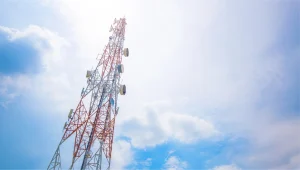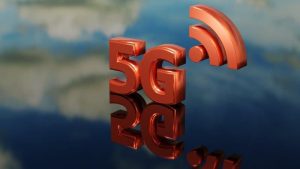How we live, work, and communicate has changed dramatically as a result of the development of mobile networks. 4G networks have enabled a world of smooth streaming, instant messaging, and cloud connectivity within the last ten years. The fifth-generation mobile network, or 5G, is now available and promises even more speed, connectivity, and creative possibilities.
However, what distinguishes 5G from 4G specifically? Does this technological advancement mean more than just quicker internet? We’ll examine the technical differences, advantages, and anticipated effects of 5G on several industries and daily life in this blog article.
4G: What is it?
It’s critical to comprehend the 4G base before exploring 5G. 4G, which was commercially introduced in the late 2000s, was intended to give mobile devices speeds comparable to those of broadband. Among its salient features are:
Speed: Under ideal circumstances, 4G networks may deliver download speeds of up to 100 Mbps (megabits per second), which facilitate seamless video streaming, quick downloads, and real-time online gaming.
Latency: In 4G networks, latency—the lag time before data transfer starts—is approximately 50 milliseconds. Although it works well for the majority of applications, real-time services like remote surgery or driverless cars are not the best fit.

Network capacity was greatly increased by 4G, enabling more devices to connect at once without experiencing noticeable performance lags.
Applications: 4G made it possible for social media, HD streaming, and mobile apps to become widely used. Additionally, it established the foundation for Internet of Things (IoT) devices.
Despite its achievements, 4G has drawbacks, particularly as data usage increases and new technologies like smart cities and augmented reality (AR) strain the limits of connectivity.
5G: What is it?
The fifth-generation mobile network, or 5G, is a significant advancement in wireless technology. 5G, which will be formally introduced in a few areas in 2019, seeks to solve 4G’s shortcomings while creating new opportunities for innovation. Its distinguishing characteristics include:

Speed: 5G is 100 times faster than 4G, with promised rates of up to 10 Gbps (gigabits per second). This implies that it might only take a few seconds to download a 4K film.
Latency: 5G makes latency almost instantaneous by cutting it to as little as 1 millisecond. For applications that need real-time communication, like remote surgery or vehicle-to-vehicle communication, this extremely low latency is essential.
Capacity: 5G can support the exponential rise of IoT devices by handling a significantly higher number of devices per square kilometre.
Reliability: Improved dependability guarantees steady operation even in crowded places like stadiums or city centres.
Energy Efficiency: 5G networks are made to be more energy-efficient, which will lower total power consumption and prolong the battery life of IoT devices.
Important Distinctions Between 4G and 5G
1. Velocity
4G: Provides 100 Mbps of speed.
Up to 10 Gbps of theoretical speed is possible with 5G.
Faster downloads, improved performance in data-intensive applications, and more fluid streaming of high-resolution videos are all made possible by this enormous speed boost.
2. Latency
4G: 50 ms is the average latency.
5G: A millisecond latency is possible.
For real-time applications like driverless cars, virtual reality (VR), and remote-controlled drones, this latency reduction is essential.

4G Capacity: Thousands of devices can be supported per square kilometre.
Millions of devices per square kilometre can be supported by 5G.
In order to enable smart cities, where sensors, cameras, and devices must all function simultaneously, 5G’s greater capacity is crucial.
4. Technology 5G makes use of cutting-edge technologies such as beamforming, massive MIMO (Multiple Input Multiple Output), and millimetre waves (mmWave):
mmWave: Provides greater bandwidth and faster speeds by operating at high frequencies.
Massive MIMO: Increases network efficiency and capacity by using numerous antennas.
Beamforming improves performance and lowers interference by directing signals towards devices rather than broadcasting them in all directions.
4G’s scalability for future demands is limited by its reliance on conventional frequencies and less sophisticated technologies.
5. Scope of Application
Although the primary goal of 4G was to enhance mobile internet, 5G broadens its range of applications to include:
Automation in industry
Smart cities and homes
Vehicles with connectivity
AR and VR in remote healthcare
The Advantages of 5G
The goal of 5G is to enable a connected future, not only increase speed. Here are some ways that 5G helps different industries:
1. Improved Customer Experience
Customers can experience immediate cloud services, 8K video streaming, and lag-free gaming with 5G. 5G networks will be ideal for applications like virtual concerts and immersive VR games.

- Encouraging Companies
5G gives companies the chance to improve client experiences, develop new products, and streamline processes. For example:Manufacturing: Real-time monitoring and predictive maintenance are made possible by 5G-enabled IoT devices.
Retail: By using AR to create virtual try-ons for clothing or furnishings, retailers may improve the buying experience.
3. Transforming Medical Practice
5G has enormous potential benefits for the healthcare industry:Low latency allows for robotic precision in remote procedures.
Real-time data transmission is possible with wearable health devices for ongoing monitoring.4. Self-Driving Cars
Autonomous vehicles depend on 5G’s real-time communication capabilities to communicate with their surroundings and each other.5. Smart Cities
The foundation of smart cities is 5G, which makes it possible for connected traffic signals, effective energy grids, and improved public safety systems.
Difficulties in the 4G to 5G Transition
Although 5G has several benefits, there are obstacles to its deployment:
Infrastructure: In order to support its higher frequencies, 5G calls for new infrastructure, such as fiber-optic cables and tiny cell towers.
Cost: The high cost of developing and maintaining 5G networks may result in increased expenses for both enterprises and consumers.
Device Compatibility: In order to access the network, consumers must update from previous generations of devices that are not 5G compatible.
Coverage: Rural and isolated locations may experience delays in 5G connection, even though urban areas are given priority.
5G’s Future
With 5G, a new era of connectivity is just getting started. As technology develops, its potential will only increase. By the decade’s end, we might observe:
Early studies on the sixth-generation network, with an emphasis on even faster speeds and more intelligent connectivity, are known as 6G development.
Integration with AI: To maximise performance and applications, 5G networks collaborate with artificial intelligence.
Global connectivity: As 5G becomes more widely available, closing the digital divide.
In conclusion,
A significant advancement in mobile technology, the switch from 4G to 5G will have a profound impact on people, companies, and society as a whole. 5G is poised to revolutionise the future by driving ideas we haven’t even begun to envision, whereas 4G laid the groundwork for today’s digital world.
5G will have an influence on many industries as it continues to roll out internationally, improving connectivity, encouraging innovation, and changing how we live and work. The transition to 5G offers both consumers and companies a preview of what a fully connected future may hold, in addition to being an improvement.